Grow cucumbers without a garden? Absolutely! Imagine biting into a crisp, refreshing cucumber you nurtured yourself, even if you only have a balcony or a sunny windowsill. It’s easier than you think, and this DIY guide will show you exactly how to make it happen.
For centuries, humans have cultivated cucumbers, tracing their origins back to India. Historically, they were prized for their cooling properties and nutritional value. Today, the joy of growing your own food, regardless of space constraints, is experiencing a huge resurgence. People are increasingly drawn to the satisfaction of nurturing life and enjoying fresh, homegrown produce.
But let’s face it, not everyone has access to a sprawling garden. That’s where this DIY trick comes in! Learning how to grow cucumbers without a garden opens up a world of possibilities. You’ll save money on groceries, reduce your carbon footprint, and experience the pure delight of harvesting your own delicious cucumbers. Plus, it’s a fantastic way to connect with nature, even in the heart of the city. I’m excited to share my favorite tips and tricks for successfully growing these delightful veggies in containers, so let’s get started!
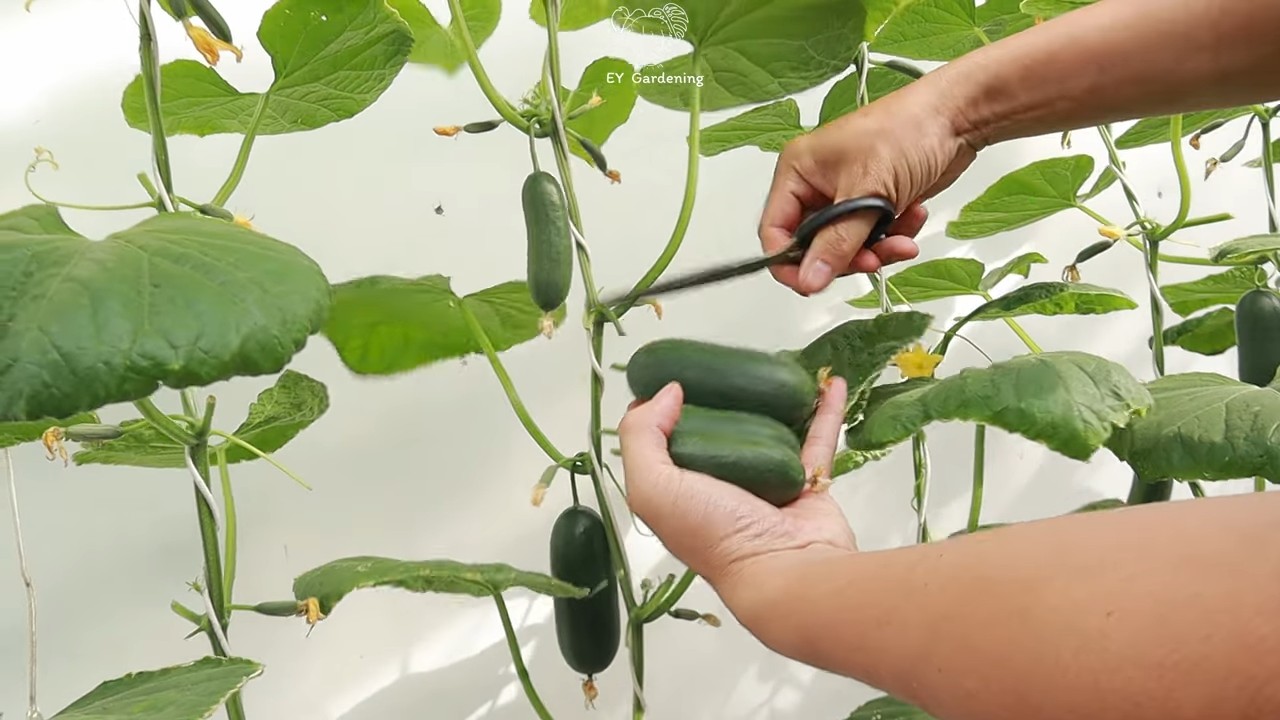
Growing Cucumbers Without a Garden: A DIY Guide to Container Gardening
Hey there, fellow gardening enthusiasts! Don’t have a sprawling backyard? No problem! You can absolutely grow delicious, crisp cucumbers even if you’re limited to a balcony, patio, or even just a sunny windowsill. I’m going to walk you through everything you need to know to successfully grow cucumbers in containers. It’s easier than you think, and the reward of fresh, homegrown cucumbers is totally worth it.
Choosing the Right Cucumber Variety
First things first, not all cucumber varieties are created equal when it comes to container gardening. You’ll want to opt for bush or compact varieties that are specifically bred for smaller spaces. These types tend to be more productive and manageable in pots.
Here are a few of my favorite bush cucumber varieties:
* Bush Champion: These are early producers and yield a good amount of medium-sized cucumbers.
* Spacemaster: As the name suggests, these are perfect for small spaces. They produce dark green, flavorful cucumbers.
* Salad Bush: These are compact and produce a good yield of slicing cucumbers.
* Patio Snacker: These are ideal for snacking and produce small, sweet cucumbers.
Avoid vining varieties like ‘Marketmore’ or ‘Straight Eight’ unless you have a very large container and a robust trellis system. While technically possible, they require significantly more space and support.
Gathering Your Supplies
Okay, now that we’ve picked our cucumber variety, let’s gather the necessary supplies. Here’s what you’ll need:
* A Large Container: This is crucial! Cucumbers need plenty of room for their roots to grow. I recommend a container that’s at least 24 inches in diameter and 12 inches deep. The bigger, the better!
* High-Quality Potting Mix: Don’t skimp on the potting mix! Use a well-draining mix specifically formulated for containers. Avoid using garden soil, as it can become compacted and doesn’t drain well in pots.
* Cucumber Seeds or Seedlings: You can start from seed or purchase seedlings from your local garden center. Seedlings will give you a head start, but starting from seed is more economical.
* Trellis or Support System (Optional, but Recommended): Even bush varieties can benefit from some support. A small trellis, tomato cage, or even sturdy stakes will help keep the plants upright and prevent the cucumbers from rotting on the soil.
* Watering Can or Hose: Cucumbers need consistent watering, especially during hot weather.
* Fertilizer: A balanced, water-soluble fertilizer will provide your cucumber plants with the nutrients they need to thrive.
* Gardening Gloves: To keep your hands clean and protected.
* Hand Trowel: For planting and transplanting.
Planting Your Cucumbers
Alright, let’s get our hands dirty! Here’s how to plant your cucumbers in containers:
1. Prepare the Container: Make sure your container has drainage holes. If not, drill some! Then, fill the container with your high-quality potting mix, leaving a few inches of space at the top.
2. Sowing Seeds (If Starting from Seed): If you’re starting from seed, sow 2-3 seeds per container, about 1 inch deep. Water gently and keep the soil consistently moist. You should see seedlings emerge in about 7-10 days. Once the seedlings have a few sets of true leaves, thin them out, leaving only the strongest seedling in each container.
3. Transplanting Seedlings (If Using Seedlings): If you’re using seedlings, gently remove them from their nursery pots. Loosen the roots slightly and plant them in the center of your container, at the same depth they were growing in their original pots.
4. Add Support (If Using): Install your trellis or support system now, before the plants get too big. This will prevent you from damaging the roots later on.
5. Water Thoroughly: Water the newly planted cucumbers thoroughly, until water drains out of the bottom of the container.
Caring for Your Container Cucumbers
Now that your cucumbers are planted, it’s time to provide them with the care they need to flourish.
1. Watering: Cucumbers need consistent watering, especially during hot weather. Check the soil moisture daily and water when the top inch of soil feels dry to the touch. Avoid overwatering, as this can lead to root rot. Aim for deep, infrequent watering rather than shallow, frequent watering.
2. Sunlight: Cucumbers need at least 6-8 hours of sunlight per day. Place your container in a sunny location where it will receive plenty of direct sunlight.
3. Fertilizing: Feed your cucumber plants with a balanced, water-soluble fertilizer every 2-3 weeks. Follow the instructions on the fertilizer package. You can also supplement with compost tea or other organic fertilizers.
4. Pruning (Optional): While not always necessary, pruning can help improve air circulation and encourage more fruit production. Remove any yellowing or dead leaves. You can also pinch off the tips of the vines to encourage branching.
5. Pollination: Cucumbers need to be pollinated in order to produce fruit. If you’re growing your cucumbers indoors or in an area with limited bee activity, you may need to hand-pollinate them. To do this, use a small paintbrush to transfer pollen from the male flowers (which have a long, thin stem) to the female flowers (which have a small cucumber-like structure at the base).
6. Pest and Disease Control: Keep an eye out for common cucumber pests like aphids, cucumber beetles, and squash bugs. You can control these pests with insecticidal soap, neem oil, or by hand-picking them off the plants. Also, watch out for diseases like powdery mildew and downy mildew. Improve air circulation by pruning and avoid overhead watering to prevent these diseases. If necessary, you can treat with a fungicide.
Harvesting Your Cucumbers
The best part! Harvesting your homegrown cucumbers.
1. Timing: Cucumbers are typically ready to harvest about 50-70 days after planting, depending on the variety. Check the seed packet or plant tag for specific harvesting instructions.
2. Size: Harvest your cucumbers when they reach the desired size and color for your chosen variety. Overripe cucumbers can become bitter and seedy.
3. Technique: Use a sharp knife or pruning shears to cut the cucumbers from the vine, leaving a small stem attached.
4. Enjoy: Wash your freshly harvested cucumbers and enjoy them in salads, sandwiches, pickles, or however you like!
Troubleshooting Common Problems
Even with the best care, you might encounter some challenges along the way. Here are a few common problems and how to address them:
* Yellowing Leaves: This can be caused by overwatering, underwatering, nutrient deficiencies, or pests. Check the soil moisture, fertilize if necessary, and inspect for pests.
* Lack of Fruit: This can be caused by poor pollination, lack of sunlight, or nutrient deficiencies. Hand-pollinate if necessary, ensure adequate sunlight, and fertilize regularly.
* Bitter Cucumbers: This can be caused by inconsistent watering, high temperatures, or stress. Water consistently, provide shade during the hottest part of the day, and avoid stressing the plants.
* Powdery Mildew: This fungal disease appears as a white, powdery coating on the leaves. Improve air circulation, avoid overhead watering, and treat with a fungicide if necessary.
Choosing the Right Potting Mix: A Deeper Dive
I mentioned using high-quality potting mix, but let’s delve a little deeper into why this is so important. Regular garden soil is often too heavy and compact for container gardening. It doesn’t drain well, which can lead to root rot, and it can also harbor pests and diseases.
A good potting mix, on the other hand, is specifically formulated for containers. It’s lightweight, well-draining, and provides the right balance of nutrients for your plants. Look for a potting mix that contains ingredients like:
* Peat Moss or Coco Coir: These materials help retain moisture and provide good aeration.
* Perlite or Vermiculite: These materials improve drainage and aeration.
* Compost: This provides essential nutrients and improves soil structure.
You can also make your own potting mix by combining equal parts peat moss or coco coir, perlite or vermiculite, and compost.
The Importance of Drainage
I can’t stress this enough: drainage is absolutely crucial for container gardening. Cucumbers, like most plants, don’t like to sit in soggy soil. Soggy soil deprives the roots of oxygen, which can lead to root rot and other problems.
Make sure your container has plenty of drainage holes. If it doesn’t, drill some! You can also add a layer of gravel or pebbles to the bottom of the container to improve drainage, but this isn
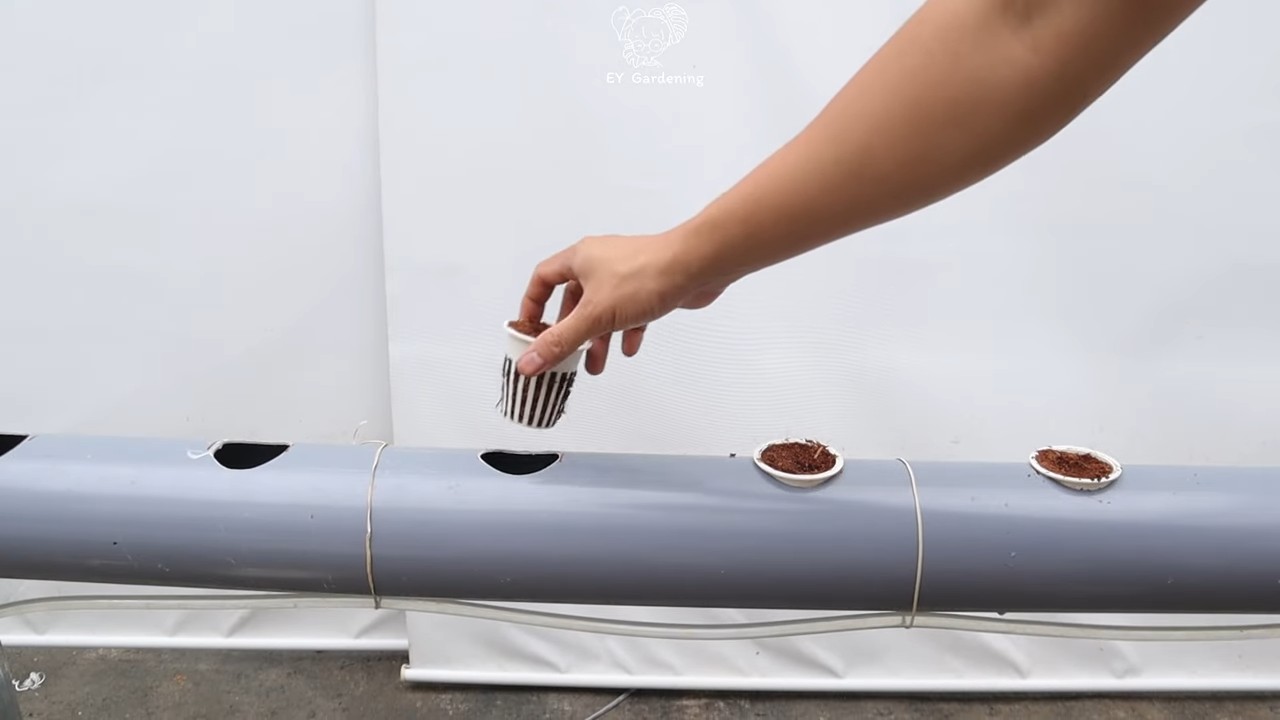
Conclusion
So, there you have it! Growing cucumbers without a garden is not only possible, it’s surprisingly simple and rewarding. We’ve walked you through the process, from selecting the right container and cucumber variety to providing the essential care for a thriving plant. This DIY trick opens up a world of fresh, homegrown cucumbers, even if you’re limited to a balcony, patio, or even a sunny windowsill.
Why is this a must-try? Because it empowers you to enjoy the unparalleled taste of freshly picked cucumbers, bursting with flavor and nutrients, without the commitment of a traditional garden. Imagine the satisfaction of harvesting your own crisp, cool cucumbers for salads, sandwiches, or refreshing summer drinks. Plus, it’s a fantastic way to connect with nature, learn about plant life, and add a touch of green to your urban environment.
But don’t stop there! Experiment with different cucumber varieties to find your favorites. Bush varieties like Spacemaster or Patio Snacker are particularly well-suited for container gardening. You can also try training your cucumber vines to climb a trellis or support structure, adding vertical interest to your space. Consider companion planting with herbs like basil or marigolds to deter pests and enhance the flavor of your cucumbers. For a fun twist, try pickling your homegrown cucumbers for a tangy treat!
We’ve given you the tools and knowledge to embark on this exciting gardening adventure. Now, it’s your turn to get your hands dirty (or not, if you’re using a soilless mix!). We wholeheartedly encourage you to try this DIY trick for growing cucumbers without a garden. It’s a fun, accessible, and ultimately delicious way to bring the garden to you.
Don’t be afraid to experiment, adapt the techniques to your specific environment, and most importantly, have fun! We’re confident that you’ll be amazed by the results. And once you’ve harvested your first batch of homegrown cucumbers, we’d love to hear about your experience. Share your photos, tips, and stories in the comments below. Let’s build a community of urban gardeners, one cucumber at a time! Let us know if you have any questions.
Frequently Asked Questions (FAQ)
What kind of container should I use for growing cucumbers?
The ideal container size is at least 5 gallons, but 10 gallons is even better. This provides ample space for the roots to grow and prevents the plant from becoming root-bound. Choose a container made from plastic, terracotta, or even a repurposed bucket, as long as it has drainage holes. Good drainage is crucial to prevent root rot. Dark-colored containers can heat up quickly in direct sunlight, so consider using a lighter color or wrapping the container in reflective material to keep the soil cool.
What type of soil is best for container-grown cucumbers?
Avoid using garden soil directly in your container, as it can become compacted and doesn’t drain well. Instead, opt for a high-quality potting mix that’s lightweight, well-draining, and rich in organic matter. You can also create your own mix by combining equal parts peat moss, perlite, and compost. Adding a slow-release fertilizer to the potting mix at planting time will provide essential nutrients for the first few weeks.
How much sunlight do cucumbers need?
Cucumbers are sun-loving plants and require at least 6-8 hours of direct sunlight per day to thrive. Choose a location that receives plenty of sunlight throughout the day. If you’re growing cucumbers indoors, you may need to supplement with grow lights, especially during the winter months. Rotate the container regularly to ensure that all sides of the plant receive adequate sunlight.
How often should I water my cucumber plants?
Cucumbers need consistent moisture, especially during hot weather. Water deeply whenever the top inch of soil feels dry to the touch. Avoid overwatering, as this can lead to root rot. A good rule of thumb is to water thoroughly in the morning, allowing the foliage to dry before evening. Mulching around the base of the plant can help retain moisture and suppress weeds.
What kind of fertilizer should I use for cucumbers?
Cucumbers are heavy feeders and benefit from regular fertilization. Use a balanced fertilizer with an NPK ratio of 10-10-10 or 14-14-14. Apply the fertilizer according to the package instructions, typically every 2-3 weeks. You can also use organic fertilizers like compost tea or fish emulsion. Avoid over-fertilizing, as this can burn the roots and damage the plant.
How do I deal with pests and diseases on my cucumber plants?
Inspect your cucumber plants regularly for signs of pests or diseases. Common pests include aphids, spider mites, and cucumber beetles. You can control these pests with insecticidal soap, neem oil, or by hand-picking them off the plants. Common diseases include powdery mildew and downy mildew. Prevent these diseases by providing good air circulation, avoiding overhead watering, and using disease-resistant cucumber varieties. If you notice signs of disease, treat the plants with a fungicide.
How do I pollinate my cucumber plants if I’m growing them indoors?
Cucumbers are typically pollinated by bees and other insects. If you’re growing cucumbers indoors, you may need to hand-pollinate them. Use a small paintbrush to transfer pollen from the male flowers to the female flowers. Male flowers have a long, thin stem, while female flowers have a small cucumber-like fruit at the base. Pollinate the flowers in the morning, when the pollen is most viable.
When can I harvest my cucumbers?
Cucumbers are typically ready to harvest 50-70 days after planting. Harvest them when they are the desired size and color. The skin should be firm and smooth. Use a sharp knife or scissors to cut the cucumbers from the vine, leaving a small stem attached. Regular harvesting encourages the plant to produce more cucumbers.
Can I grow cucumbers in hanging baskets?
Yes, you can grow cucumbers in hanging baskets, especially bush varieties. Choose a large hanging basket with good drainage and use a lightweight potting mix. Provide adequate support for the vines as they grow. Water and fertilize regularly, as hanging baskets tend to dry out quickly.
What are some good cucumber varieties for container gardening?
Some excellent cucumber varieties for container gardening include:
* Spacemaster
* Patio Snacker
* Bush Champion
* Salad Bush
* Picklebush
These varieties are compact and productive, making them well-suited for growing in containers.
Can I grow cucumbers from seed directly in the container?
Yes, you can directly sow cucumber seeds in the container. Plant the seeds about 1 inch deep and keep the soil moist until they germinate. Once the seedlings emerge, thin them to one plant per container. Starting seeds indoors gives you a head start, but direct sowing is also a viable option.
How do I support my cucumber vines?
Cucumber vines can be trained to climb a trellis, stake, or other support structure. This helps to keep the fruits off the ground, improves air circulation, and makes harvesting easier. Install the support structure at planting time to avoid disturbing the roots later. Use soft ties or twine to attach the vines to the support.
What if my cucumber plant is producing flowers but no fruit?
This could be due to a lack of pollination. Make sure you are hand-pollinating the flowers if you are growing them indoors. Also, ensure that the plant is receiving enough sunlight and nutrients. Stress from heat or drought can also affect fruit production.
Can I grow cucumbers in a greenhouse?
Yes, growing cucumbers in a greenhouse is a great way to extend the growing season and protect the plants from pests and diseases. Provide adequate ventilation and humidity control in the greenhouse. You may also need to hand-pollinate the flowers.

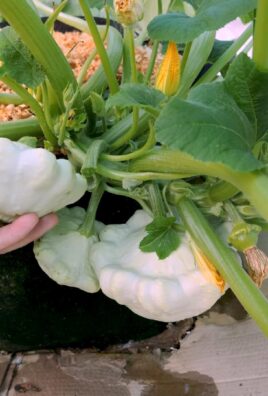
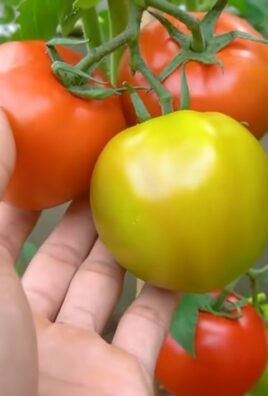
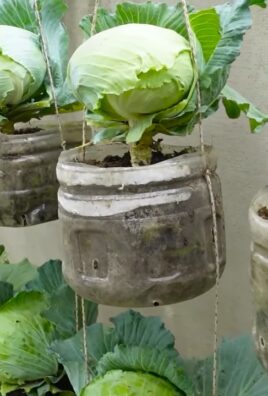
Leave a Comment